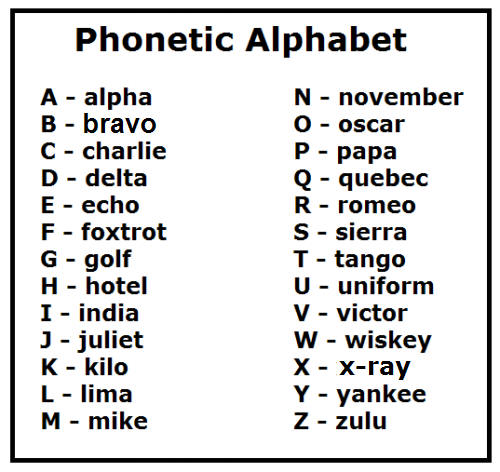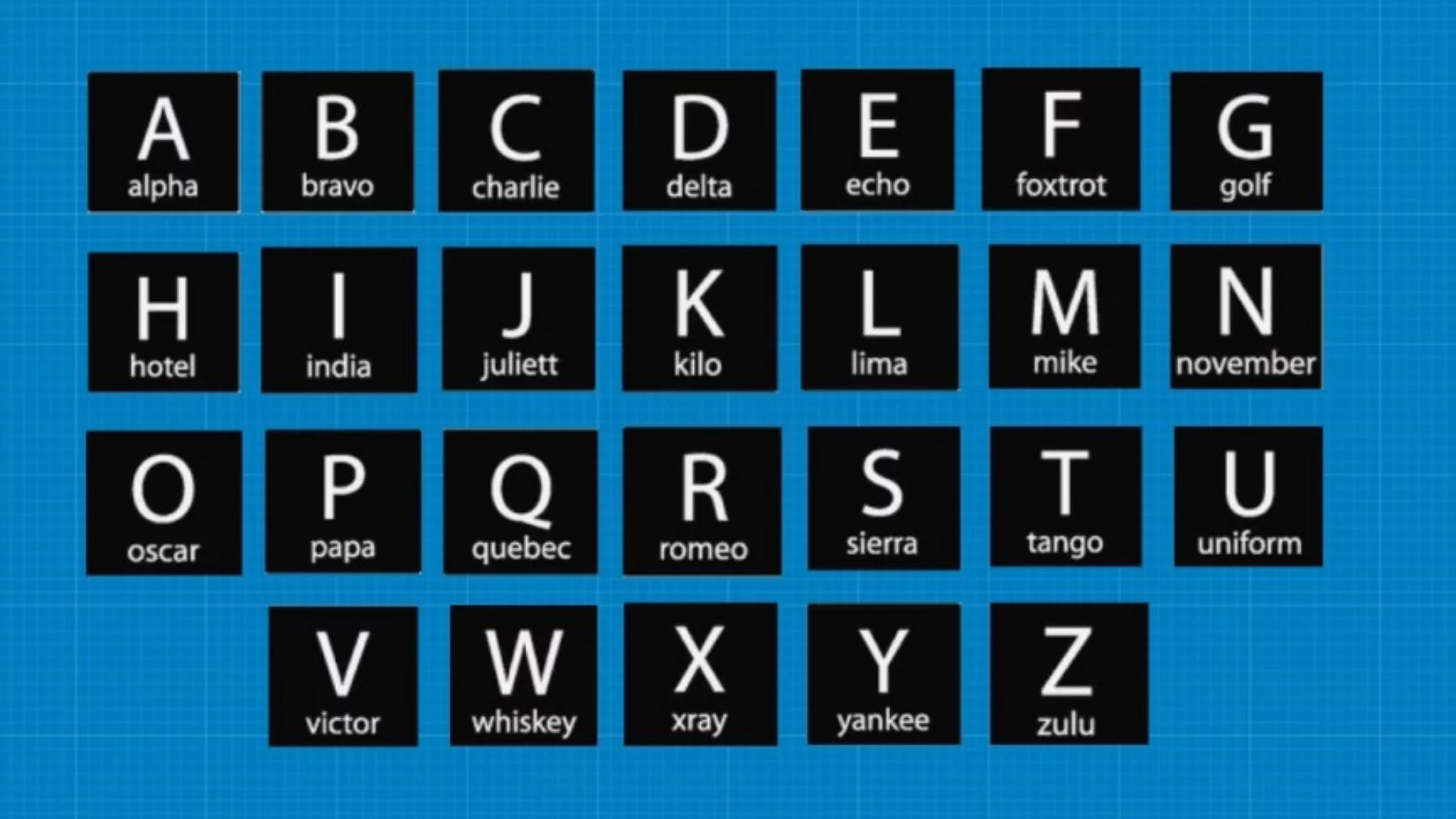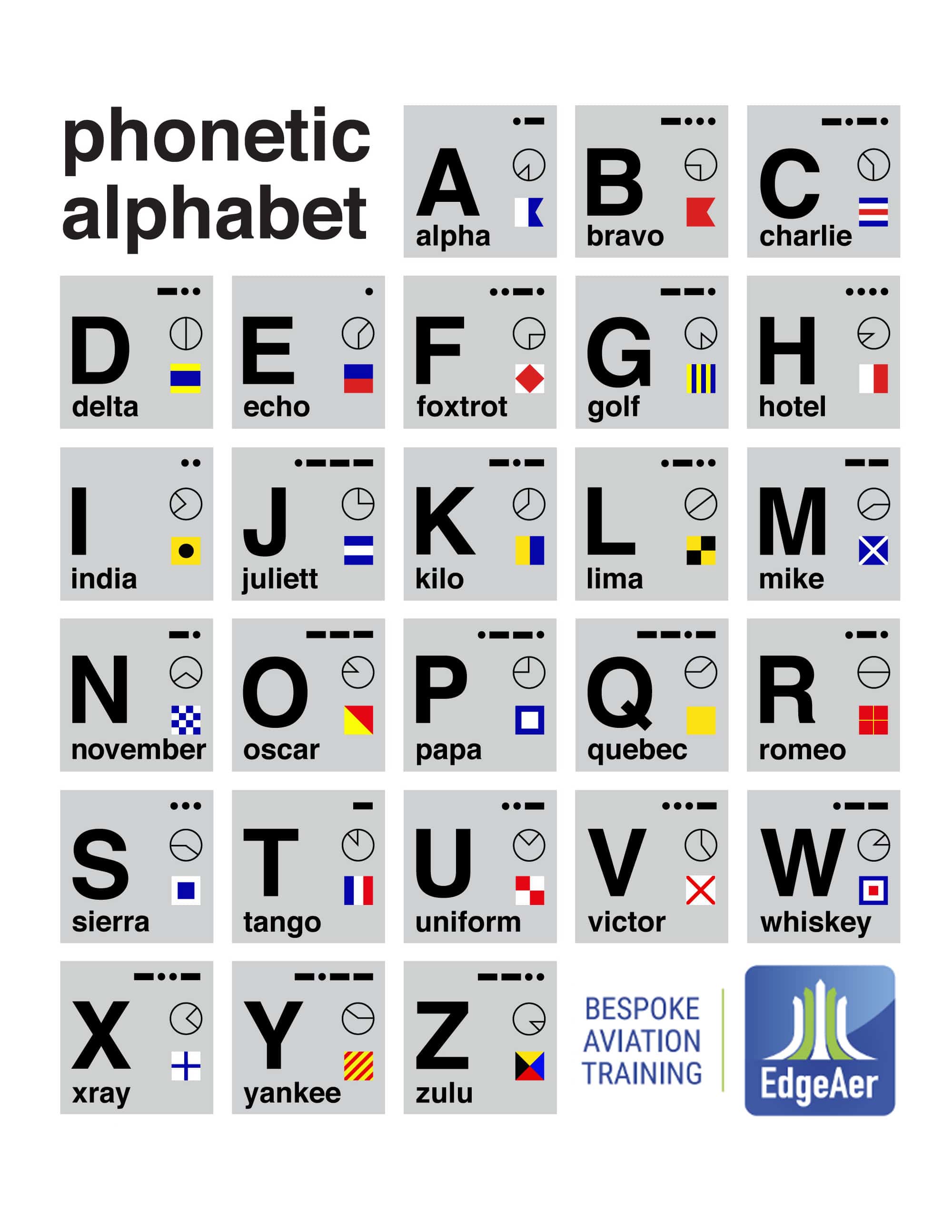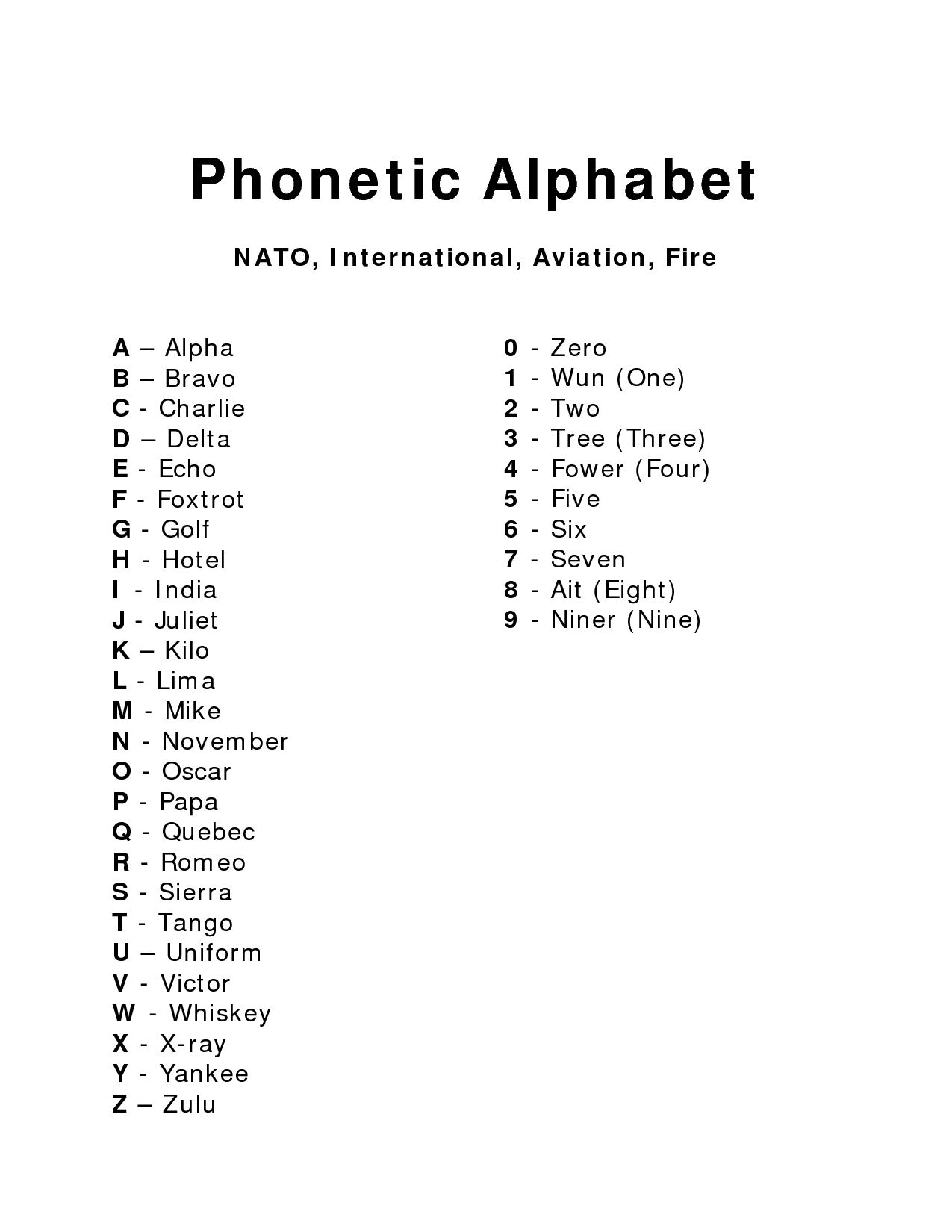Do you know how pilots communicate with one another during flights? They use the Aviation Alphabet! This code is essential for aviation communications to ensure that messages are clear and easy to understand, even in difficult conditions. In this post, we will explore the Aviation Alphabet and how it works.
What is the Aviation Alphabet?
The Aviation Alphabet, also known as the International Radiotelephony Spelling Alphabet, is a system of phonetic spelling that uses a set of code words to represent each letter of the alphabet. These code words are used to spell out words or phrases, making them easier to understand over a radio or other communication devices.
The Aviation Alphabet was developed in the 1950s by the International Civil Aviation Organization (ICAO) and is now widely used in aviation and other industries, such as law enforcement and the military.
The Code Words
The code words used in the Aviation Alphabet are carefully chosen to reduce the chances of misunderstanding. The words are chosen based on their phonetic characteristics, making them distinguishable from one another even in poor audio conditions.
Here are the code words for each letter of the alphabet:
- A: Alpha - pronounced “AL-fa”
- B: Bravo - pronounced “BRAH-vo”
- C: Charlie - pronounced “CHAR-lee”
- D: Delta - pronounced “DEL-ta”
- E: Echo - pronounced “ECK-oh”
- F: Foxtrot - pronounced “FOKS-trot”
- G: Golf - pronounced “GOLF”
- H: Hotel - pronounced “HO-tel”
- I: India - pronounced “IN-dee-ah”
- J: Juliet - pronounced “JEW-lee-ett”
- K: Kilo - pronounced “KEY-loh”
- L: Lima - pronounced “LEE-mah”
- M: Mike - pronounced “MIKE”
- N: November - pronounced “no-VEM-ber”
- O: Oscar - pronounced “OSS-cah”
- P: Papa - pronounced “PAH-pah”
- Q: Quebec - pronounced “keh-BECK”
- R: Romeo - pronounced “ROW-me-oh”
- S: Sierra - pronounced “see-AIR-rah”
- T: Tango - pronounced “TANG-go”
- U: Uniform - pronounced “YOU-nee-form”
- V: Victor - pronounced “VIK-tah”
- W: Whiskey - pronounced “WISS-key”
- X: X-ray - pronounced “ECKS-ray”
- Y: Yankee - pronounced “YANG-kee”
- Z: Zulu - pronounced “ZOO-loo”
Why Use the Aviation Alphabet?
The Aviation Alphabet is used for several reasons. Firstly, it reduces the chances of misunderstanding. By using a set of code words that are clearly distinguishable from one another, communication is clearer and more effective, even in poor audio conditions. This is important in aviation, where clarity in communication can be a matter of life or death.
Secondly, the Aviation Alphabet is used to avoid confusion between similar-sounding letters. For example, the letters “B” and “P” can sound very similar over a radio, especially in poor conditions. By using the code words “Bravo” and “Papa” instead, confusion is avoided.
Finally, the Aviation Alphabet is used to ensure consistency in communication. By using the same code words for each letter of the alphabet, regardless of language, everyone involved in aviation communications can understand one another, regardless of their native language. This is important in the global aviation industry, where communication between people of different nationalities is common.
Learning the Aviation Alphabet
If you are interested in learning the Aviation Alphabet, there are several ways to do so. Many aviation enthusiasts have created helpful materials, such as posters and printable guides, to help people learn the code words.
Here are a few examples of materials you can use to learn the Aviation Alphabet:
Aviation Alphabet Printable
 This printable guide provides a helpful visual representation of the Aviation Alphabet, making it easy to learn and remember the code words.
This printable guide provides a helpful visual representation of the Aviation Alphabet, making it easy to learn and remember the code words.
The Aviation Alphabet Code for All Future Pilots to Know
 This helpful infographic provides a comprehensive breakdown of the Aviation Alphabet, including the code words and examples of how they can be used.
This helpful infographic provides a comprehensive breakdown of the Aviation Alphabet, including the code words and examples of how they can be used.
Aviation Alphabet Poster
 This poster provides a large, easy-to-read visual representation of the Aviation Alphabet, making it perfect for hanging on a wall in your home or office.
This poster provides a large, easy-to-read visual representation of the Aviation Alphabet, making it perfect for hanging on a wall in your home or office.
Phonetic Alphabet Wallpaper
 This downloadable wallpaper provides a stylish and informative way to learn the Aviation Alphabet. It includes not only the code words for each letter of the alphabet, but also the pronunciation for each word.
This downloadable wallpaper provides a stylish and informative way to learn the Aviation Alphabet. It includes not only the code words for each letter of the alphabet, but also the pronunciation for each word.
Conclusion
The Aviation Alphabet is an essential part of aviation communication, ensuring clarity and consistency in messages between pilots and air traffic controllers. By learning the code words, you can gain a better understanding of how communication works in aviation and become a more knowledgeable aviation enthusiast.
So, take some time to learn the Aviation Alphabet - you’ll be glad you did!